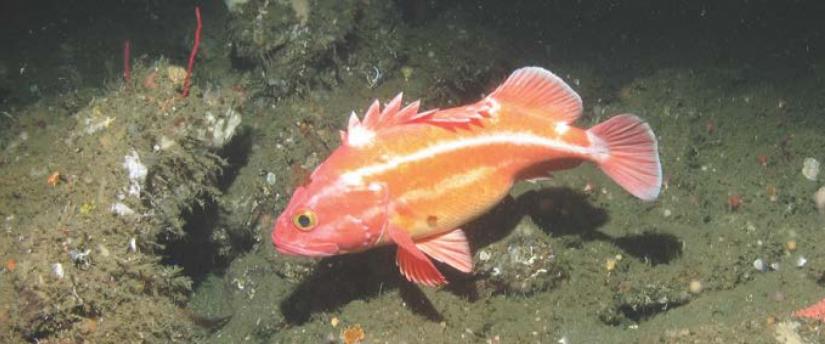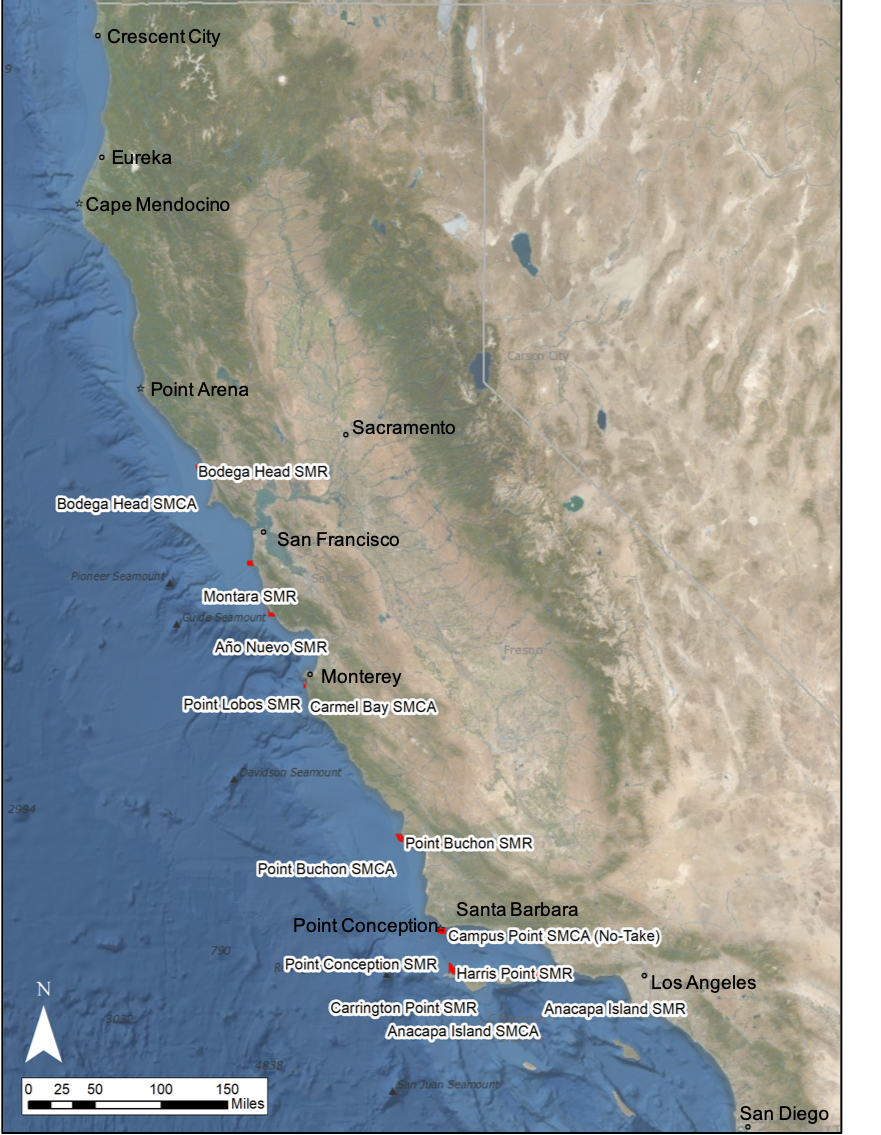
Rocky reef habitats deeper than 30 meters represent at least 75% of all marine habitats in California state waters by area. Deep rocky banks and outcroppings, underwater pinnacles, and submarine canyons support a high diversity of ecologically and economically important fish and invertebrate species. These habitats also experience a much greater likelihood of habitat alteration than nearshore habitats due to the heavy use of trawls, longlines, and gillnets in deep water. However, little is known about these habitats due to the difficulties associated with sampling in deeper water.
This project identified observable MPA effects in deepwater habitats to date, via analysis of 25+ years of historical imagery and data from California waters as well as advanced modeling approaches integrating fisheries recruitment and physical oceanographic data. The researchers conducted surveys using remotely operative vehicles, camera, and video tools to collect biological data. They also synthesized analyses of historical and newly collected data to provide a comprehensive assessment of deep rocky reef ecosystem health across the MPA network. This integrative analysis helped fill a key gap in scientific understanding of these unique systems, and provide the state with recommendations for future monitoring in this habitat.
Project monitoring sites
This project plans to conduct monitoring at the following Tier I sites (listed from north to south):
- Bodega Head SMR
- Bodega Head SMCA
- Montara SMR
- Ano Nuevo SMR
- Carmel Bay SMCA
- Point Lobos SMR
- Point Buchon SMR
- Point Buchon SMCA
- Point Conception SMR
- Campus Point SMCA
- Harris Point SMR
- Carrington Point SMR
- Anacapa Island SMCA
- Anacapa Island SMR
Attachments
 Rick Starr
Rick Starr

